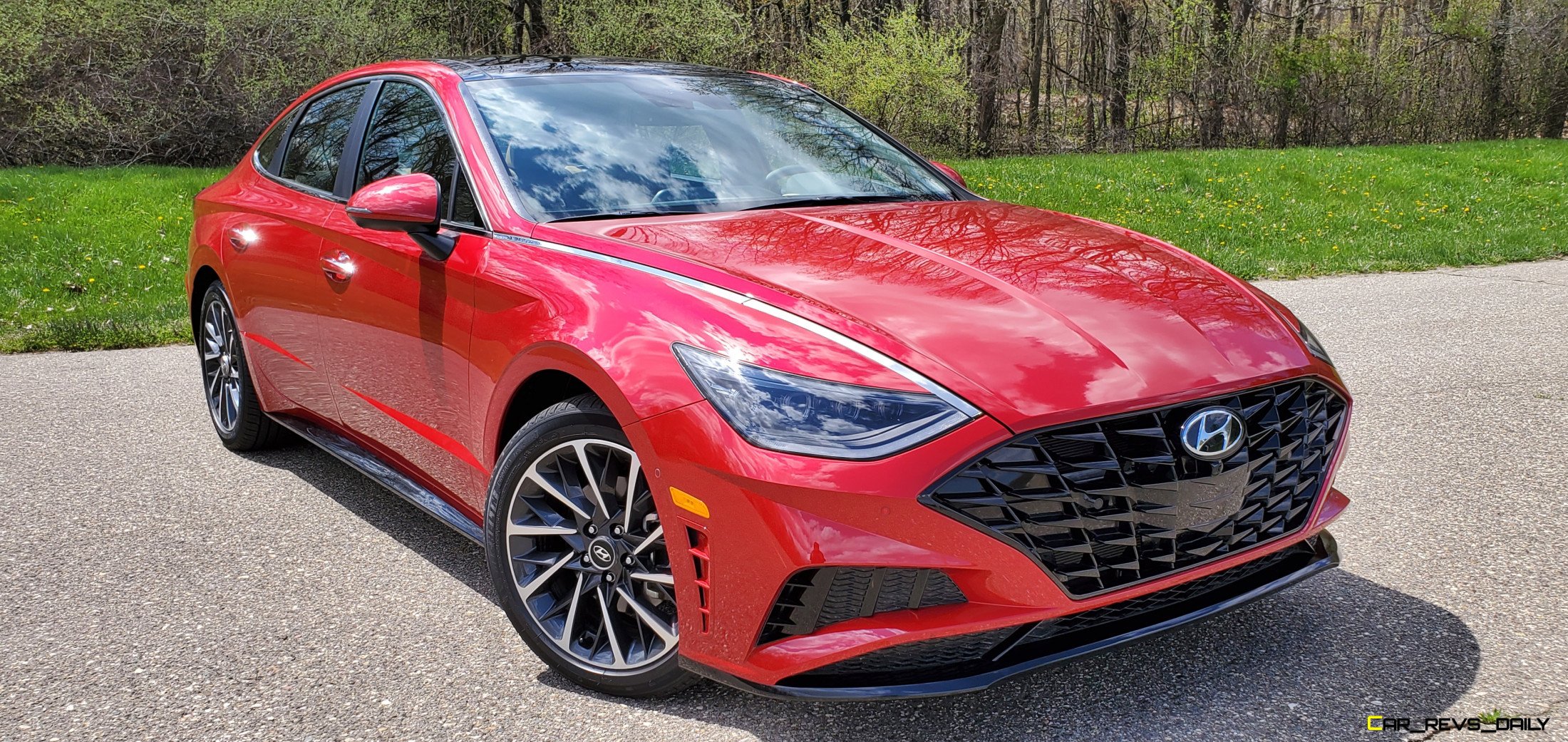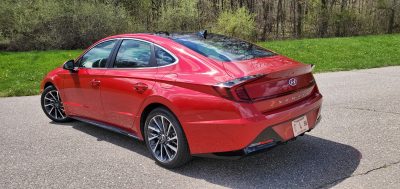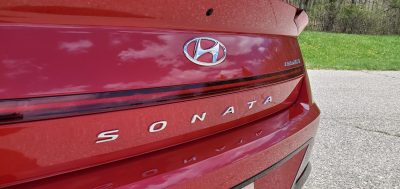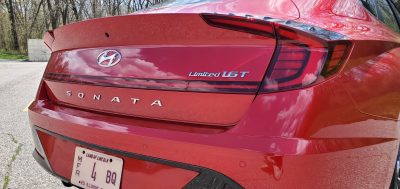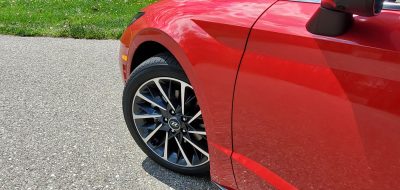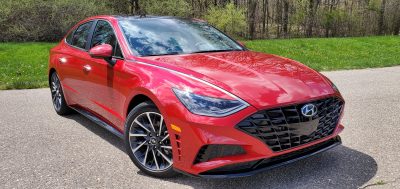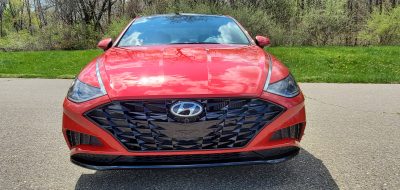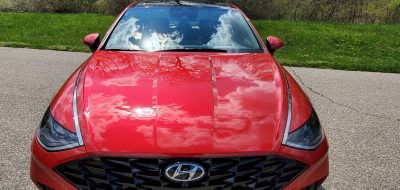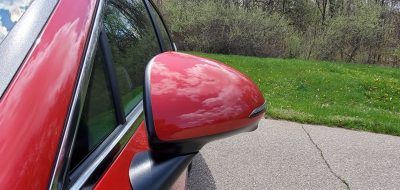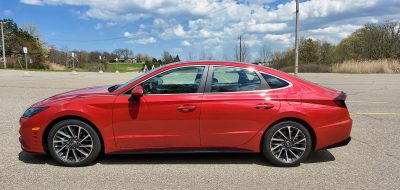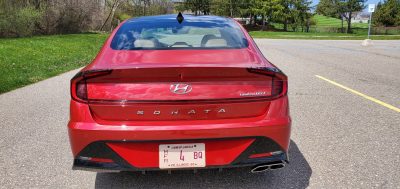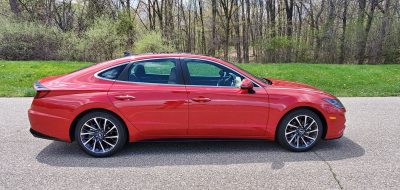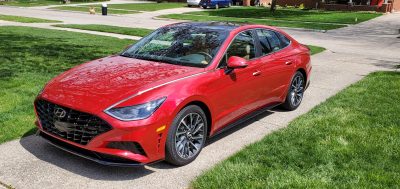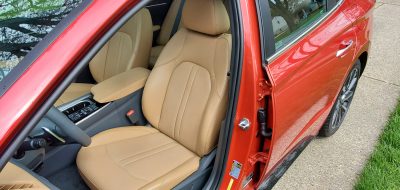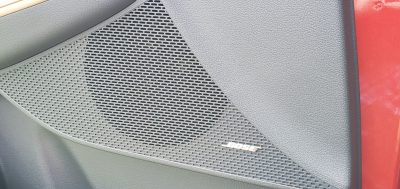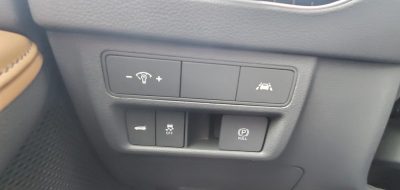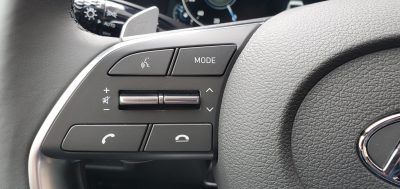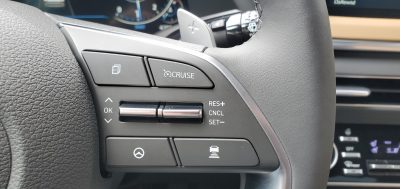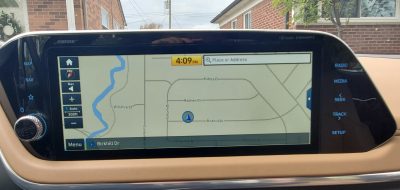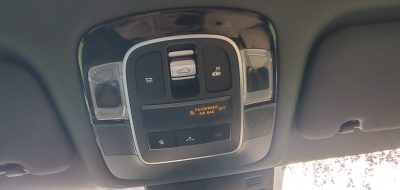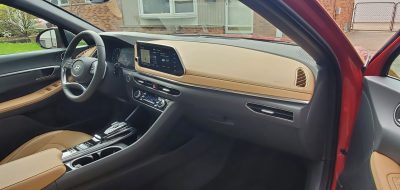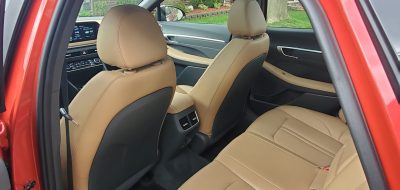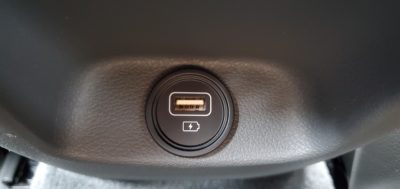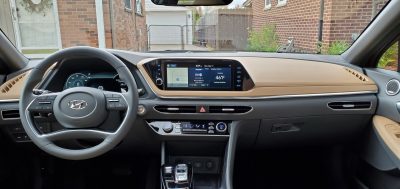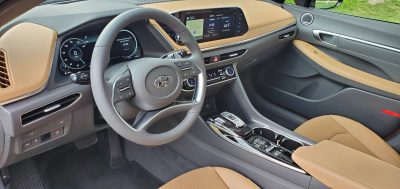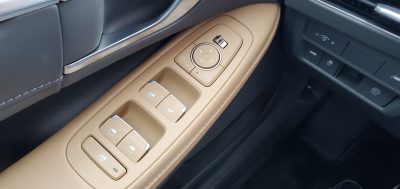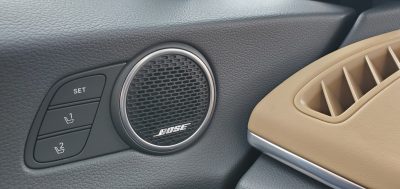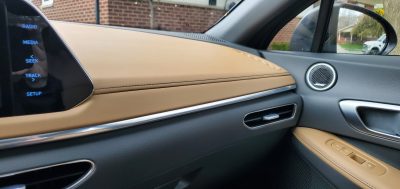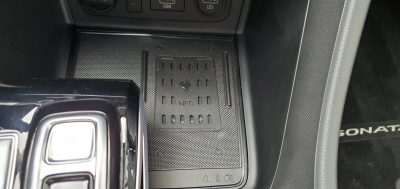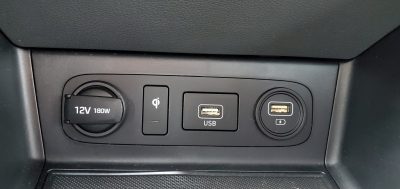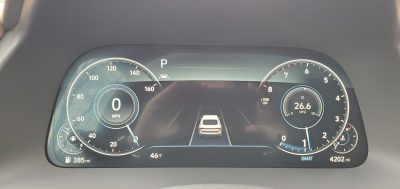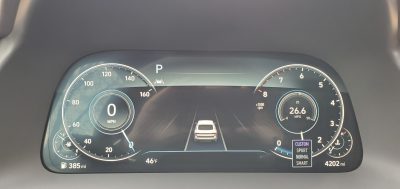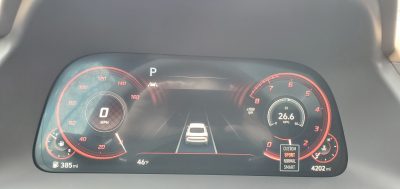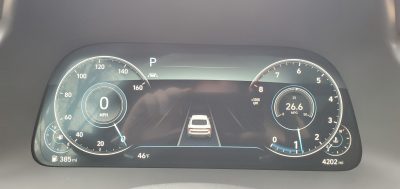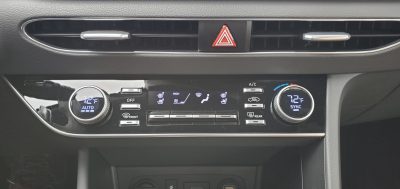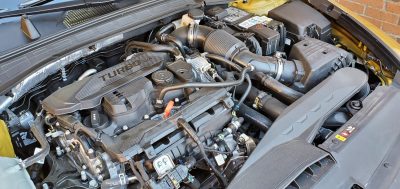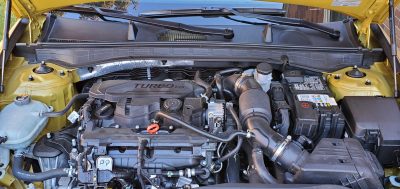When the 2020 Hyundai Sonata first appeared, it represented a bold departure from the outgoing model. That particular iteration of Sonata was showing its age, and its exterior styling simply lacked the visual punch that defined a few of its other rivals. The 2020 Sonata aims to completely revamp its image, and has emerged with a very futuristic suit of clothes and a strong emphasis on technology.
But will it all be enough to allow the Sonata to successfully play the rights notes needed to disrupt the segment once again? Or is it a few octaves short of achieving perfect harmony in the sedan segment?
A Design Revolution:
Hyundai might sculpt its cars in South Korea, but it appears that Hyundai designers also tapped into the broader counter revolution taking place in the sedan market. With a rapidly growing field of SUV and CUV entries taking over the role of being the functional family appliance in the fleet, sedans have been free to play more with their designs and have a newfound level of focus infused into their lines. A prominent example of this is the Toyota Camry. Once known for having the aesthetics of a discount Maytag dryer, the current generation Camry is perhaps the most stylish one we have seen yet, and it is already resonating well with sedan buyers. In the case of the 2020 Sonata, it embraces creativity at every opportunity with healthy amounts of curves and tapers scattered through out its canvas. When viewed from many angles, there are plenty of stylish traits that will immediately draw your attention.
The front grille is dramatically shaped and feature complex textures that add welcome pinches of flair to the nose. The grille is accented by LED boomerang style LED strips that make a distinctive styling statement at night, and actually seamlessly blends into the chrome belt lines. The hood is stamped with performance focused character lines, and in a way, it makes you feel like you have been transported to 2011 when the original fluidic sculpted Sonata first arrived on the scene. The side profile has a very strong resemblance to many current German cars, with the fastback profile featuring a sloping roofline that tapers down to the short trunklid. The sides have deep cuts and contrasting valleys that add some athletic mojo to our red hued tester. The styling as a whole is a very well rounded package, and virtually has no errors in execution. The lone exception are the aero foils that are baked into the taillights. They are supposed to help smooth out airflow at the rear, but they do stick out a bit too much visually when viewed from certain angles. With the Toyota Camry and the Honda Accord dialing into their inner design mojo, the Sonata has to stay on its game to keep up its momentum, and we are curious to see how the look holds up over the next few years in its life cycle.
Luxury and Comfort Blend Into A Uniquely Styled Cabin:
Along with the new wardrobe, the 2020 Sonata also reboots the interior for buyers. The outgoing Sonata had an interior that certainly did a good job delivering comfort, but looked very drab in getting the job done. Hyundai designers aimed to exorcise all of this drabness for the 2020 model year, and we think that they did a good job of achieving the desired result. The horizontal theme is more defined than ever before, and it nicely compliments the slim air vents. On higher grade levels like our Limited tester, the look is enhanced by a high resolution touchscreen that is paired with a fully digital instrument cluster. The digital gauges use very dynamic graphics when going through various driving modes, and this helps deliver a high degree of uniqueness that also served to give more identity to each of the driving modes.
The dashboard itself uses higher grade materials, and it incorporates a bold wing shape for a subtle design statement. The piano key style climate switches work effortlessly, and the quilted leather seats in our tester did a good job delivering comfort that blurs the line between a mainstream sedan, and a more luxury focused offering. The console mounted shifter buttons do take some getting used to, but we do like the way they manage to still work with the design. The changes in dimensions are very subtle, but the 46.1 inches of legroom are the best in the whole segment. Many Sonatas get fully manual seats, but our Limited example arrived with four way power adjustable heated and cooled front seats. The seats themselves are very supportive, though the bottom cushion is noticeably flatter than some of its other competitors. The rear seats in contrast offer 34.8 inches of leg room which is the smallest in the class, however, Hyundai has focused on providing a strong interior space bias towards the front of the car. The rear seats have thinner cushions, but don’t expect that to make too much of an impact, with occupants over 6 feet tall still finding plenty of ways to be comfortable.
Turbocharged and Proud Of It:
With all the changes that Hyundai has made to the 2020 Sonata both inside and out, the Korean car company has chosen to play it safe with performance hardware, and offers two engines for buyers to choose from. Sonata SE and SEL come equipped with a 2.5 liter four cylinder engine good for 191 horsepower and 181 lb-ft of torque. However, if you opt for either the SEL Plus or a range topping Limited like our car, you will be rewarded with a 1.6 liter turbocharged engine. While power does go down slightly to 180 horsepower, the engine makes up for it by offering a beefier 195 lb-ft of torque. This extra torque makes its presence felt when out in town, with the engine being eager to reach peak torque, and then staying there. Sometimes this produces a rubber band like effect, especially when full boost fully kicks in. But master the throttle balance, and the engine will send the Sonata to 60 mph in roughly 8.0 seconds which is on par for the segment.
An eight speed automatic is the sole choice, with the unit being a very good dance partner with the turbo. A drive mode selector is mounted on the center console with the driver being able to toggle through four different modes (Normal, Sport, Smart, and Eco.) While the Sonata is content with going through the motions in Normal mode, we preferred to keep things in Sport mode. This is not so much due to the increased urgency that is added to the transmission’s shifts, but rather, due to the added heft in the steering wheel, which helps remove some of the excess numbness generated by the electric steering rack.
The Sonata’s front struts and rear multi-link suspension do their part to inject some vigor into the Sonata’s driving manners. It’s not a sports car (buyers will have to wait until the upcoming Sonata N-Line model for that) but it is still competent enough to handle the daily commute as well as the occasional windy road. Ride quality is much smoother than the old model, and the Sonata even has a higher degree of poise when tasked with freeway driving. Braking in our tester was solid, with the Sonata also having a Germanic feel in this regard too.
Value Quotient:
Pricing for the 2020 Sonata is its figurative ace in the hole, with a base SE model starting at $23,600. SEL and SEL Plus models serve as the volume members of the family with a starting price of $25,700 and $27,650 respectively. It’s important to note here that the SEL Plus is the cheapest way to gain the 1.6 liter turbocharged four cylinder engine. Bringing up the rear is the range topping Limited which boasts a base sticker of $33,500. Our tester arrived fully equipped, with the final sticker rising to a final total of $34,365 thanks in part to optional floor mats, as well as the $930 destination fee. This pricing puts it roughly in the firing line of segment stalwarts like the Honda Accord and the Toyota Camry. The Camry does offer buyers a V6, while the Accord brings a bigger four cylinder and even a manual transmission in select grades. However, both of them lack some of the Sonata’s standard equipment, and both the Toyota and the Honda have inferior infotainment systems.
So how well does the 2020 Hyundai Sonata Limited play the Symphony of Disruption? With an impressive suite of technology, standard equipment, and a renewed focus on providing buyers world class style for the money. We think the revamped Hyundai certainly has a chance of potentially shaking the system, but it will depend on how the mid-size segment endures continued growth in the CUV and SUV segments. In the meantime, we await the upcoming Sonata N-Line with baited breath and plenty of Megadeth MP3s to keep us happily entertained.

Carl Malek has been an automotive journalist for over 10 years. First starting out as a freelance photographer before making the transition to writing during college, his work has appeared on numerous automotive forums as well as websites such as Autoshopper.com.
Carl is also a big fan of British vehicles with the bulk of his devotion going to the Morgan Motor Company as well as offerings from Lotus, MG, and Caterham. When he is not writing about automobiles, Carl enjoys spending time with his family and friends in the Metro Detroit area, as well as spending time with his adorable pets.

